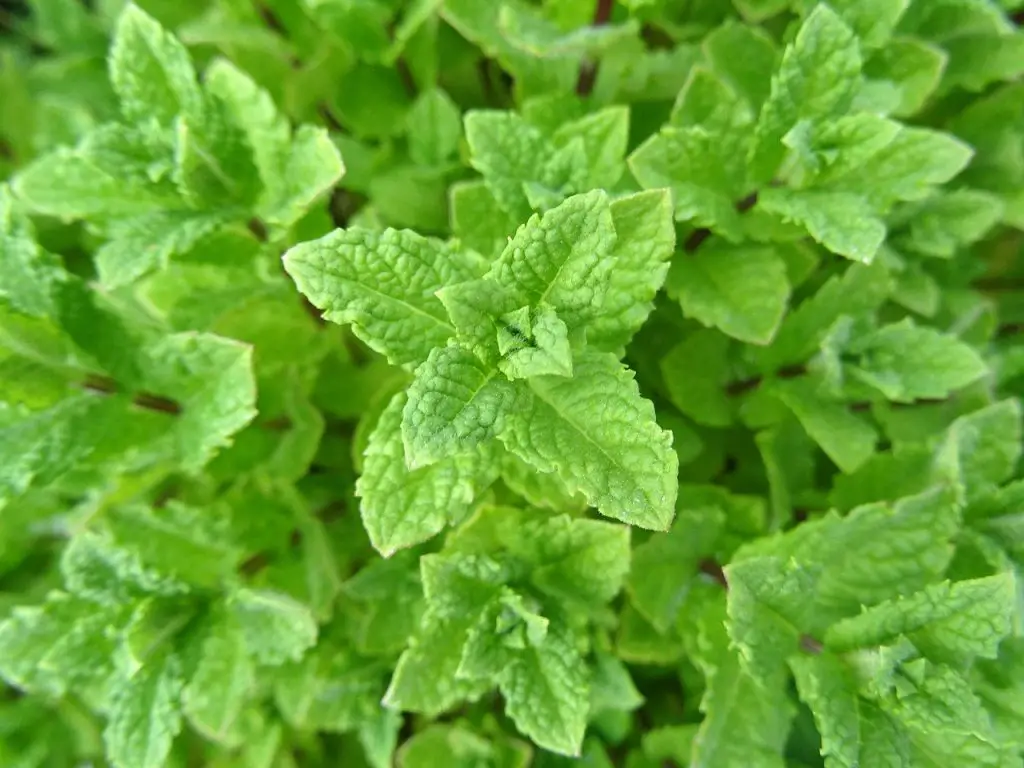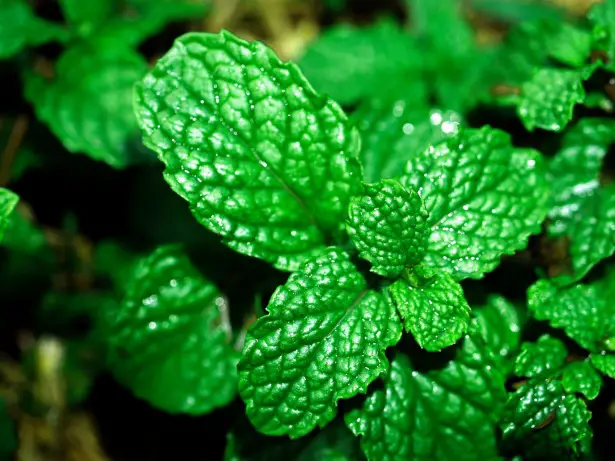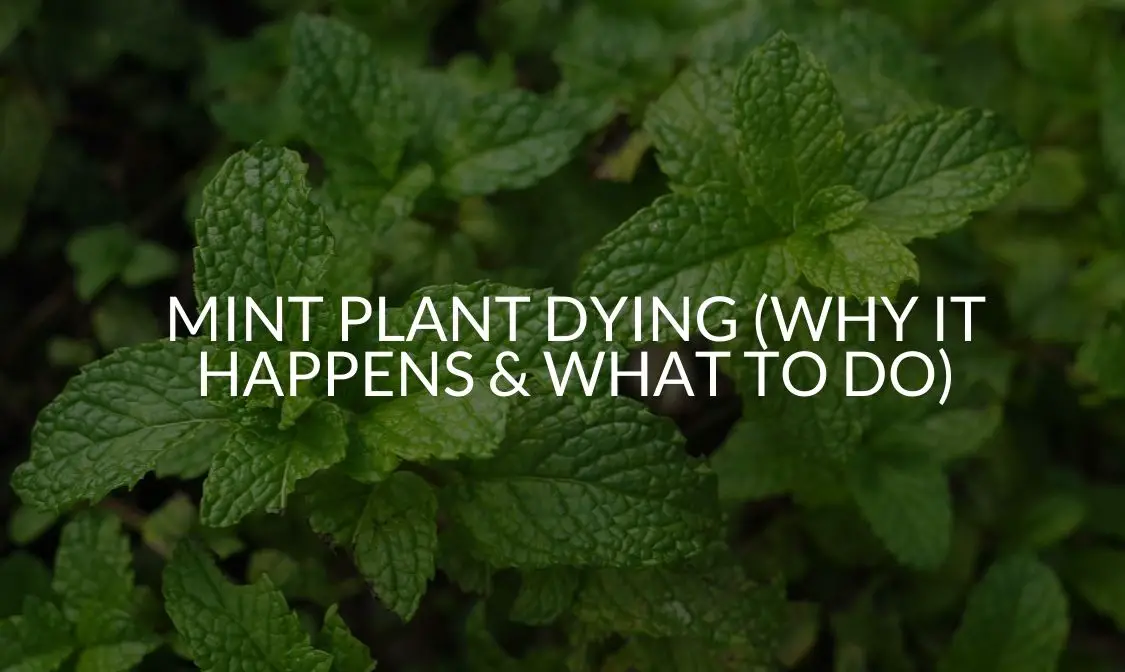Mint is an amazing plant. It’s delicious in teas and goes well on a host of endless sweet treats. It even has some great healing capacities like alleviating the symptoms of PMS, headaches, bad breath and sinus infections, to name a few.
So, it’s in your best interest to grow mint. But, like its cousins lavender, rosemary and basil, it has strict requirements to survive. So, if you find your mint plant dying, refer to this troubleshooting guide to keep it happy and healthy.
Why Do Your Mint Plants Keep Dying?
As is the case with most plants dying, it’s almost always a watering issue. Because plants from the mint family prefer dry, arid conditions with loamy, sandy soil, it’s easy to overwater. If the soil doesn’t drain right, standing water can cause root rot.
Watering
Whenever you’re in doubt about watering, make sure the previous waterinig has drained and the plant has absorbed what it needs. The top should feel dry. It’s best to give it a lot of water once and while rather than in bits every day.
Use about three cups per five to seven inch plant every three days or so. Adjust this to your area, hardiness zone, where it rests and the time of year. This means, if you are in a hot and dry climate, you should water a little more often than an area that’s warm and humid; and even less in winter.
Soil
Also make sure the soil is medium-rich and free of clay with a pH between 5.6 and 7.5. If the soil isn’t ideal, the mint will show signs of dying. It should maintain a certain amount of moisture, but it shouldn’t be too wet for too long.
Although they require a big pot to thrive, they root shallowly. If you’ve buried your mint too deep, it could be why it continues to die, regardless of other efforts.
Sunlight
Of course, sunlight may also be a reason why a mint plant is dying. Depending on where you live, it may prefer full sun or partial shade. Partial shade is best for mint in subtropical areas or in climates where humidity is frequent. See that the mint is receiving six hours of sunlight every day. Any less or more could result in it dying, especially if it prefers partial shade.
Disease & Pests
Unlike other species from the mint family, all varieties of mint are very prone to a common fungal disease called “Rust.” Plus, other leaf diseases can occur because of water getting on the leaf..
When disease is in question, always inspect the leaves for insects like white fliers, black flies, aphids, spider mites and etc. They’re often very small and sit on the underside of the leaf. Another pest identifier is the appearance patches of discoloration or holes on the leaves.
Climate & Temperature
Mint in cooler temperatures either dies or goes dormant. So, if it’s in your garden, you’ll have to cut it back to the roots and surround the plant with mulch when temperatures begin dropping. If potted, also sprinkle a bit of mulch around the base of the plant and store it somewhere cool and dry, like the garage, for the winter.
Growing Mint Outdoors
If the plant lives outdoors, make sure there are no other plants crowding it. Mint doesn’t do well next to plants sharing the same ground space because of its rapid and vast growing root system. You’ll also have to pay attention to extreme changes in heat and frost. Build a shade structure or cover it with a frost blanket, respectively.
Also, adjust watering and fertilizer when these temperature changes arise. Add thin and sparing amounts of organic compost and fertilizer every few months. Use mulch around the base of the plant to keep it moist and prevent it from becoming a super spreader in summer.
Mint’s Notorious Vigor
Because mint is a fast-spreading herb that can be pesky and invasive, it may be dying because it needs pruning. Mint does best with consistent picking and cutting; this will prevent it from invading your garden and keep the mint from choking itself. But if you prune away too much, it can force the plant into a struggle with sunlight, which can be another cause for it dying.

Why Is Your Indoor Mint Plant Dying?
Mint does not like being indoors. It loves a roomy, shallow spot in the earth with plenty of moisture, sunshine and air. But, of course, if you’re in a colder climate, you have to keep it in a pot. Which, it will do well, but you’ll have to baby it and pay close attention to its development, taking care of any signs of trouble the moment they appear.
Life in a Pot
Make sure the pot is seven to 10 inches wide and 12 to 15 inches deep for a single mint plant. This is because the roots grow fast and plentiful. If it’s in a small pot, the plant becomes root bound because there may not be enough soil for it to gather the proper amount of nutrients and moisture to thrive.
EMF Radiation
There’s another growing problem with many indoor plants, including mint, that people should become more aware of. It’s electromagnetic frequency radiation (EMFs). This comes from your wireless router, smart phone, tablet, laptop or anything connected to the internet. The harmful frequencies can cause mint to die over long periods of exposure.
Why Is Your Mint Plant Dying From The Bottom Up?
If your mint is dying from the bottom up and you see brown spots, it’s more than likely Rust but, it could also indicate a severe case of root root. It could also mean the pot’s too small, the soil isn’t right or there’s critters nibbling away at the roots. Close inspection is the only way to be sure.
Can You Revive A Dead Mint Plant?
You can revive a mint plant that’s dying from some of the most common issues. But, if the mint is dead, it’s dead and can’t come back to life. That said, mints may appear dead, especially after winter when stems are leafless, woody and leggy. This means it’s in its dormancy period and very much alive.
If your mint is in a pot, give it some water and good light for a couple weeks. If nothing comes out of the soil, then it’s dead. You can also inspect the roots to verify the presence of rhizomes. They’re greenish-whitish in color and quite thick. If this is present and healthy looking, the plant is alive.
How To Bring A Mint Plant Back To Life?
Depending on how the mint plant looks, you ‘re going to have to attack this from different angles. If your indoor mint is sitting next to any internet-connected devices or appliances, either find a new sunny spot for the plant or move the electronics/appliances.
Pruning & Cutting
You might have success in saving mint with some pruning. Cut away as much dead growth as possible, getting as close to the soil as you can if necessary. This includes woodiness and stems.
Do this above the area where leaves branch out. Over-pruning can be bad for the mint too. Do not cut back more than 1/3 of the stem. Anything more will cause it to struggle with the sunlight, resulting in death. Otherwise, the strong root system should develop new shoots within a couple weeks.
Infestations & Diseases
If Rust is overtaking the mint, throw it away. But if it’s slight, you can try to cut away the bad parts and sprinkle the soil’s surface with a liquid sulfur compound. Another method is rinsing the plant and the pot with warm water mixed with a spot of dish soap and a splash of bleach. Then replant in a clean pot with fresh soil.
You can pick off most other pests by hand in combination with insecticidal soap on the leaves. As a preventative measure, spray neem oil on the leaves every week.
If disease and pests are bad enough, the plant is unsalvageable. But, any healthy-looking part of the root might be okay. Try to replant in a clean pot with fresh soil to see if it takes.
Seasonal Considerations
If it’s wintertime, the mint could be dormant, so don’t cut away any dead growth yet. Bring it inside, give it a nice, sunny spot and a little bit of water. Wait up to two weeks to see if anything appears. If so, cut away all the dead growth. Of course, you can also check the roots for healthy rhizomes to see if the plant is dormant.
During the spring and summer, you want to control watering, including humidity. This also means checking the soil and the amount of sunlight it gets in addition to wind and airflow. Remember, some mints want only partial shade.
Soil Assurance
You also want to ensure the soil has a medium-richness to it along with being loamy and sandy. Clay-laden soil will lead to root rot. If potted, make sure you don’t use fine sand as it will clump together and create the same problems as clay.
If the plant is too deep in the soil, work around the roots with care to lift the plant up. Try not to remove it all the way, but enough to get soil underneath. Also, ensure that there isn’t too much soil around the base of the plant.
Proper Watering
Make sure you always water at the base of the plant and wipe away any water that gets onto the leaves. If your plant is outside, you’ll have to inspect the leaves after it rains to make sure it’s getting enough airflow. If not, take some paper towels and wipe off the leaves.
You can’t neglect watering mint the same way as say lavender or rosemary, but you shouldn’t water it too much either. The best way to ensure it gets proper moisture is by checking the soil every few days. If you notice the soil still quite moist after three days, you may have standing water or the soil isn’t draining right.
Overwatering Or Underwatering
You can try putting a piece of paper toweling between the pot and the drainage dish to sop up excess moisture. Replace the paper towel when saturated and place a small oscillating fan nearby. If after three days the soil is still very moist, inspect the roots. If it’s not too bad, you can clip it off and replant.
Underwatering isn’t as much of an issue as overwatering, but it can be a problem. If the soil is bone dry, water the base of the plant, taking care to not get water on the leaves. Do this splash by splash until the soil is moist all the way through.
Containers
If the pot is too small, it becomes root bound. This means there’s not enough soil for the roots to flourish and nourish the plant. The pot should be larger than the plant itself. This is so the special root system can take hold while getting enough moisture and nutrients.
After about three years, you’ll notice potted mint dying from the center. Split the mass of roots into thirds and replant them in new pots.

Mint Takes Patience
Although mints are some of the easier plants to grow, there are some requirements that make them a bit finicky to care for. You can’t grow them right next to other plants because of their root system and their fast-spreading nature. They have to have a balance of moisture and dryness along with it’s preferred amount of sun.
So, it does take a bit of a green thumb and newer gardeners may find it difficult to get things rolling. But, with a little love and patience, it will grow well and hardy on its own in the right conditions; sometimes more than expected. Remember to cut, prune and pick your fabulous mint often.
Sources
- https://www.motherearthliving.com/in-the-garden/growing-tips-for-herbs-why-is-my-mint-dying
- https://www.finegardening.com/article/containing-mint
- https://www.almanac.com/plant/mint?page=3&trk_msg=9J8E0U9K6IPKTE855MAF03THVS&trk_contact=DFEAPHG9B2M31RUFTELAPC34T8
- https://yourindoorherbs.com/the-reasons-why-your-mint-is-leggy-and-what-to-do/
- https://www.researchgate.net/publication/294576990_Plant_Responses_to_High_Frequency_Electromagnetic_Fields

